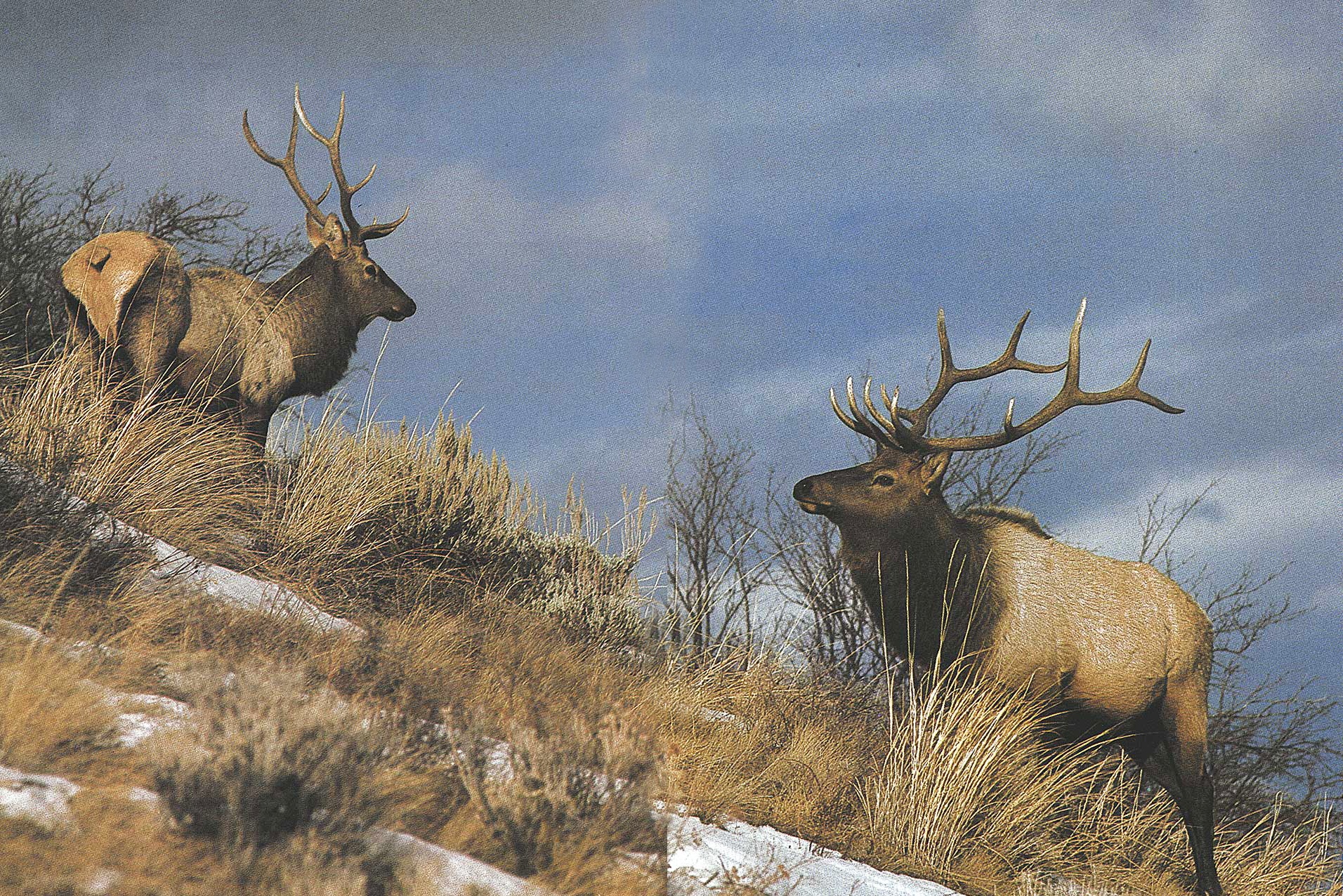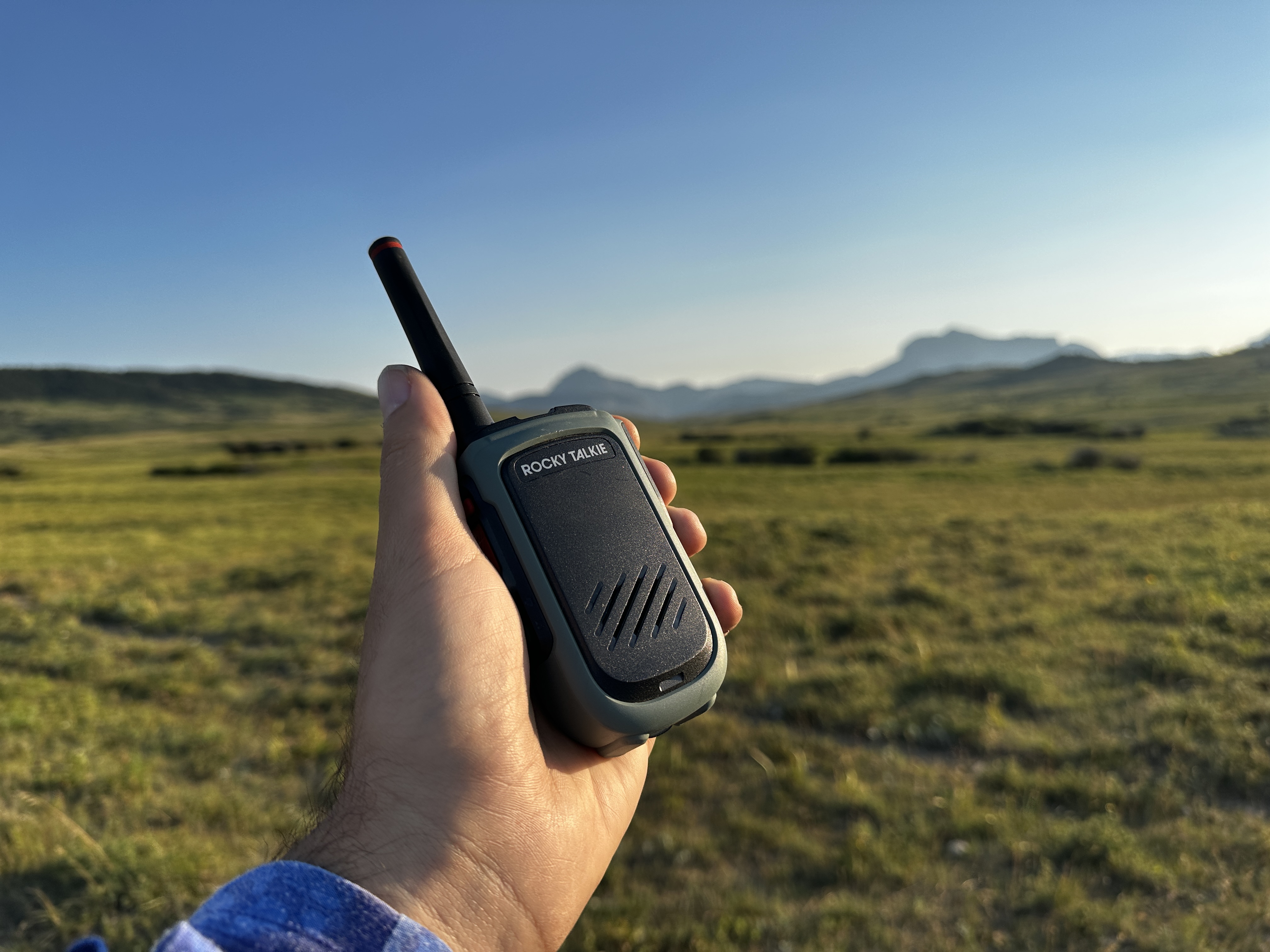This story, “Elk Hunting with the Crowds” was originally published in the October 1984 issue of Outdoor Life.
Elk hunting is commonly perceived as a backcountry scenario where the hunter and elk are engaged in a one-on-one affair, and the only sounds to be heard are wild noises of the forest.
If you believe that, then you’re in for a rude awakening if you try to hunt for elk where there is good public access. Consider these statistics: In Colorado, which has the most elk and the highest annual harvests, the hunter success runs only 15 to 20 percent each year. In many units, 75 percent or more of the bull harvest is composed of spikes, and the bull-to-cow ratio is as low as three to 100. Almost 200,000 hunters pursue elk in Colorado each year, and they take about 30,000 animals.
Tagging an elk under such crowded circumstances, in most cases, is the result of good luck. There are ways to improve your chances, though, no matter which state you hunt in.
The easiest route to success is to avoid crowds in the first place, but that’s not always possible. A good option is to hunt during the early season when elk are bugling. To do so, you’ll have to plan on a backcountry adventure or draw a tag in a lottery.
Hiring an outfitter can be expensive, and putting together a do-it-yourself elk hunt in a remote area is a chore most people prefer not to attempt, so many hunters use a vehicle to reach elk areas. Those who are well prepared will have horses tethered in a base camp to haul elk out. Most hunters, however, will go afoot and hope they can kill an elk close enough to the road so that it will be easy to carry to their vehicle. That, however, is the exception rather than the rule.
In prime elk country, you can count on crowds everywhere, and you’ll be hard pressed to drive down a road that doesn’t have fresh tire tracks, no matter how rugged it is.
Almost all of the hunting pressure will be in the higher elevations—in quaking aspens, pines, firs, and spruces. That’s supposed to be ·where elk hang out and, in fact, it is the preferred habitat for animals. But that doesn’t mean they’ll stay there when the shooting starts.
A few years ago, Don Smith, who used to be director of the Utah Divison of Wildlife Resources, was flying over a popular elk area on opening morning. He was watching the hunt from the air while returning from a wildlife meeting.
“I saw orange-clad figures on every ridge and slope,” Smith told me. “No elk in its right mind would be caught in that circus. I looked out the other window and saw 60 head of elk running full bore for the badlands. They were in low-elevation country and there wasn’t a hunter within three miles of the herd. What amazed me was the swift reaction of those elk to the presence of hunters. The season was open only a few hours and the animals wasted no time in getting out of there.”
The “badlands” Smith referred to is pinyon and juniper forests. It’s not uncommon for elk to seek shelter in such lowcountry areas, and few hunters realize that elk are in them. This may be because the area is so arid and unlike traditional elk habitat. These forests are extensive in the West -covering much of Colorado, Utah, Arizona, and New Mexico where elk live. The animals use it regularly, not only for temporary escape cover, but also for routine living requirements.
Several years ago, I was cutting firewood during elk season in a juniper forest with my wife and children. I already had my elk, and I wasn’t paying attention to anything other than sawing wood when my wife called.
“Aren’t they elk tracks?” Lois asked as she pointed to large prints in the soil. “And if so, why are the elk so far from the high country?”
I looked and confirmed her suspicions. A small herd of elk indeed lived in the area. Putting down my saw, I decided to investigate. The tracks led to a small spring where the animals had watered. More tracking showed that they were grazing in a grassy opening on a sidehill where the junipers were thick. One-half hour later, I jumped a spike bull and four cows and calves. While I expected to see elk because fresh sign was everywhere in the forest, I was nonetheless dumbfounded to see them in an environment that bordered on being classified as desert.
The following year, I visited the area before elk season. I quickly found fresh sign, which convinced me that the animals lived in the area almost year-round, and that they weren’t using it to escape from hunters. I had other commitments that season and didn’t hunt, but I returned for three successive years. I saw cows and calves on each visit and, during the third season, I killed a modest four-point bull. I never saw another hunter during those forays, and I was smugly satisfied to know that thousands of hunters were looking for elk in the national forest four miles away. Hundreds of them would never see an elk during the entire season.
As I learned more about lowland elk, I talked to wildlife officials and avid hunters. I came to the conclusion that elk readily adapt to marginal areas outside their usual high-elevation domains. Some traveled rapidly to such places when disturbed by hunters, as Don Smith had witnessed, and some chose to live there for most of the year.
In addition to pinyon and juniper forests, elk commonly hide in thick stands of oak brush, which grow just below quaking aspens at high elevations. If you’ve ever hunted in the scrub oaks of the Rockies, you’ll know what it means to fight and crawl through horrid cover. It’s hard to imagine that a large animal such as an elk can get through it, but let me assure you they do.
There are other areas where elk hide. The common denominator among all of them is that they are places where people seldom look for elk. Not surprisingly, that is why elk are attracted to these hiding spots to begin with.
Another way to beat the crowds is to bide your time and wait until snow forces elk to leave the higher elevations. The annual migration usually begins in late November and early December, but unexpected storms can start elk moving prematurely. Two factors determine the success of a late hunt: The weather must cooperate, and the state you’re hunting must offer a hunt that coincides with migration. Only a few states have late hunts, and many seasons require a lottery draw for a permit. Two famous late hunts are held outside Yellowstone National Park each winter. Seasons run through February, but tags are tough to draw.
Although there are early, late, and limited hunts, most people will take their chances and hunt during the general season. They’ll have plenty of company. A hunter may get lucky and score but, to take elk consistently, you need ingenuity and common sense.
The “crowd season” in elk country is also the season when elk are most uncooperative. Not only are they harassed by humans, they’re disinterested in bugle calls and won’t respond to a challenge. General elk hunts are usually held after the breeding season when bulls are wary and shy. What’s more, the entire forest is available to elk as escape cover, from glacial cirques above timberline to thick stands of lodgepole pine and Douglas fir. Snow hasn’t driven them out of the high country yet, and elk can hide anywhere.
Unlike deer, which are ubiquitous and found wherever there is good cover, elk travel in herds and stay together for much of the year. Finding one band of elk in a forest, even a good forest for elk hunting, can be a major undertaking. Each year, I talk to dozens of hunters who didn’t see an elk during. the entire season-and those hunters were in places where elk were fairly common. Elk country is big and heavily forested. Unless you use workable strategies, you might be hard-pressed to find what you are looking for.
A few years ago, a friend of mine had hunted for several days in a thick lodgepole forest and hadn’t seen an elk. Undaunted, he continued looking, walking 10 or 12 miles a day. On the seventh day, he spotted a spike bull grazing in a tiny clearing in the midst of heavy timber three miles from the nearest road. He killed the spike, but only by perseverance and determination. The forest he hunted in was crowded with hunters, but most of them didn’t venture more than one mile from a road, and very few of them were willing to leave wellestablished trails.
My friend had an important advantage. He didn’t fear the forest, and wandered into dark and hidden recesses where few people went.
It’s common for hunters unfamiliar with the West to be intimidated by the vastness of its mountains. An Eastern hunter admitted to an outfitter I know. that he was totally unnerved while hunting in Montana.
“It was a great hunt and I had a terrific experience,” the hunter said, “but I’ll never come back. I was scared to death in that country. It was too big and I was uncomfortable in that remote camp.”
The hunter was honest, and his feelings are shared by many others. So the answer is to hunt where surroundings are familiar, or to walk trails and old roads or follow fencelines and creeks. That’s an understandable choice, and I’m not ridiculing hunters who do so, but it’s also the best way to stay in the crowds and not see elk.
The key is to get into areas shunned by other hunters, either because they’re remote or because they just don’t “look” like elk country. Sometimes, elk will descend into deep, sheer-walled canyons and remain holed up until the season is over. I know of such a place and I discovered it while fishing for cutthroats during the summer. Numerous groups of elk droppings tipped me off, and I learned later from a friend that two or three local sportsmen hunted the canyon regularly. They had taken two or three big bulls and had kept the area a secret. I went at once, saw two big six-point bulls, and couldn’t get a shot. I managed to tie my tag to a five-point elk the following day. The spot has since been discovered by other hunters because of mining in the area, and it is no longer a haven for elk.

To find secluded areas, you must be willing to expend some time and energy. Get a good map and study it. Become familiar with the area, and look for inaccessible spots on the map. Before you ever see the area, you should have a good idea of major landmarks, water courses, and access roads. When you plan your hunt, allow some time to scout the region, and connect the information you’ve remembered from the map with the actual layout of the land. Scouting is essential if you want good odds on seeing and killing an elk.
Keep in mind, when opening day arrives, that you’re going to be competing fiercely with perhaps dozens or even hundreds of other hunters. The smartest thing you can do is to locate elk before the season opens, when they’re reasonably undisturbed. Don’t assume that, because you’ve found elk, this will mean they’ll be there when the season opens. You can bet other hunters will be scouting, and the human presence and activity will make elk uneasy. For that reason, try to keep track of a herd until the end of daylight on the eve of opening morning. If you can do that, the elk will probably be in the same general area on the opener and you’ll have an excellent chance of filling your tag.
Elk hunting statistics in Colorado show how important it is to hunt hard and sensibly on opening day. The state has two separate 11-day elk seasons each year. Of the total 22 days, most of the elk are killed on the first day. In 1982, for example, 28 percent of the yearly harvest came on opening day. The second day resulted in 12 percent of the total kill, and 8 percent were taken on the third day. Almost half of the harvest came during the first three days of hunting.
In 1982, I hunted in Colorado with two friends. We were in a popular area, and we knew we’d be faced with heavy hunting pressure. We scouted hard for two days immediately prior to the season, and found two elk herds and several places where fresh sign indicated elk were feeding.
Our hunt was superb. Each of us killed five-point bulls. We took them on the first, second, and third days of the season. In every case, we had outwitted other hunters in the vicinity. We got up early in the morning and were deep in the. forest long before daylight, and we hunted in n1gged, steep spots where other hunters refused to go.
Another way to beat the crowds is to be well-prepared with sturdy vehicles and equipment. I don’t know how many times I’ve seen traffic snarls on high-country forest roads because inexperienced hunters tried to drive in full-size motor homes and vehicles that should never have been driven off the pavement. A good vehicle will get you into the hinterlands. If it snows, you won’t have to panic and hurry out of the high elevations, which is not to say that you should ignore storm warnings. If you’re hunting in mid-November or later in the year and the radio forecasts that severe snowstorms are expected to last several days, get out of the high country as soon as you can.
Read Next: In His Day, This Legend Likely Shot More Trophy Elk On Public Land Than Any Hunter in North America
Be careful with the amount of information you pass on to members of other hunting parties. It may seem unfriendly to say this, but remember that every hunter out there is a competitor. Each has a rifle and a tag, and each will try his or her utmost to kill an elk before you do. Of course, members of your own party are different. I’m not suggesting that you shun hunters and be hostile. Just don’t volunteer information that you’ve worked hard to find. You certainly wouldn’t tell a stranger that you had seen a herd of elk feeding the night before, or that you had found a spring where animals are watering.
Sometimes, you can reverse this attitude and team up with other parties. If elk are evasive in a thick forest, you can set up a drive with groups of other hunters. Elk can’t be driven effectively — the more hunters, the better, in most cases. While it’s every hunter for himself, you’re still involved in a team effort.
When you hunt with the crowds, two parts of your body are important: your legs and your brain. Work both of them hard, but be sure your heart and lungs are up to the task, as well. Elk hunting is tough work. If you want to be in the enviable minority of hunters who score, plan your elk hunt long before the season and don’t give up until the last day of the hunt. You can’t kill an elk unless you’re out where the elk live.
Read the full article here




